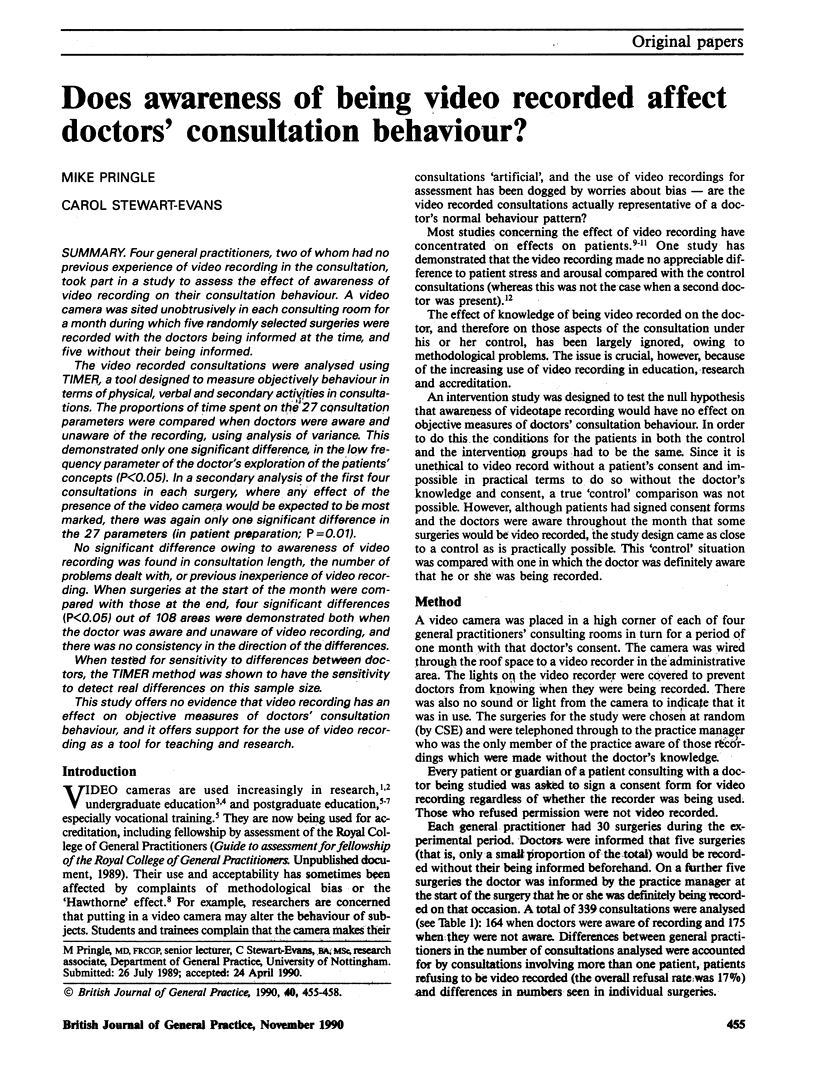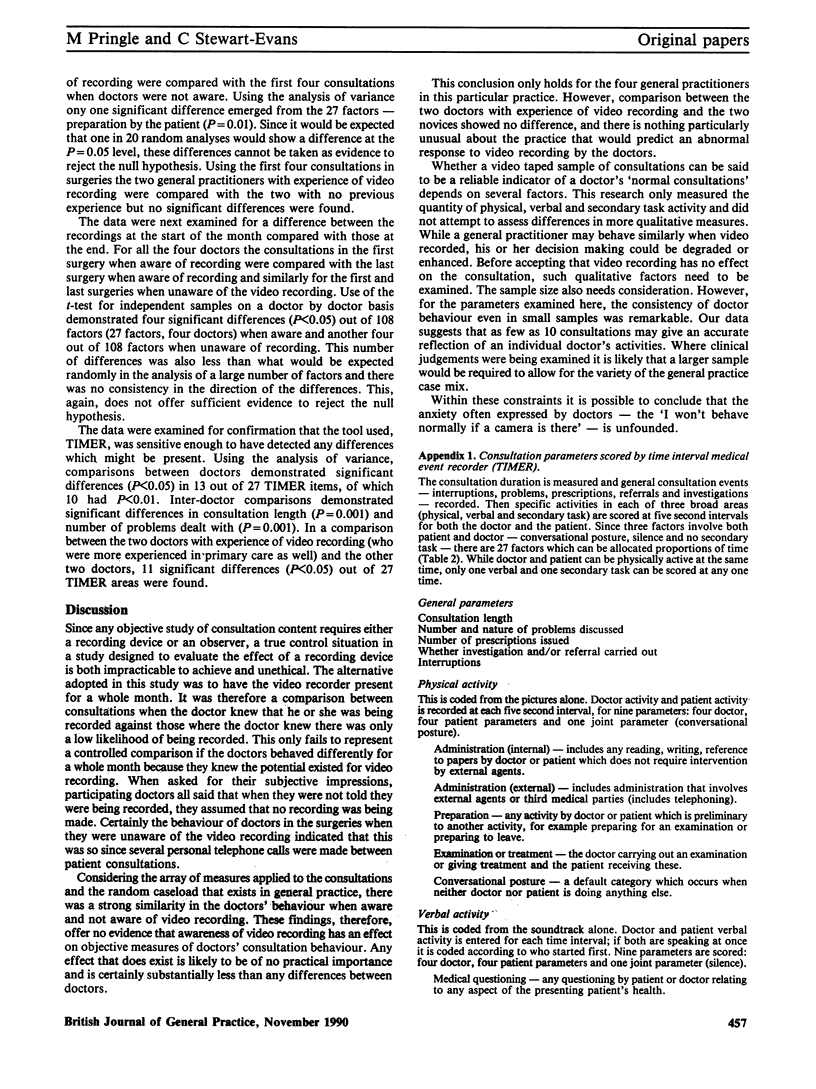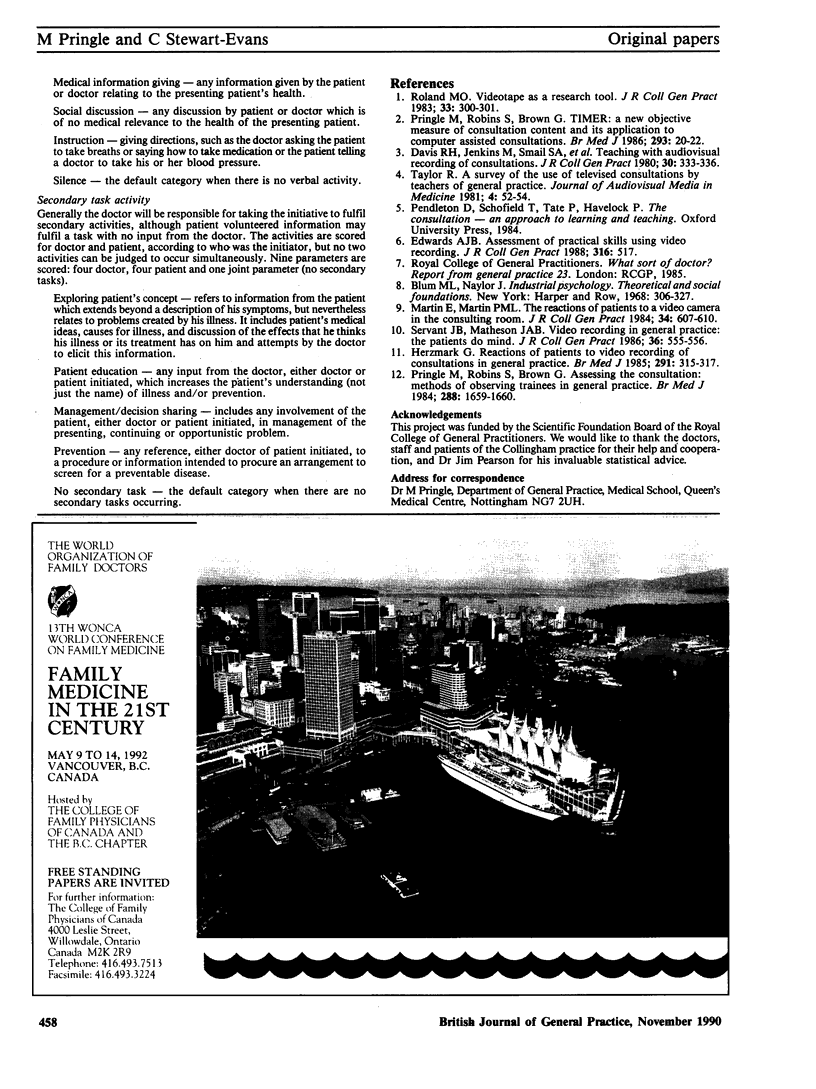Abstract
Four general practitioners, two of whom had no previous experience of video recording in the consultation, took part in a study to assess the effect of awareness of video recording on their consultation behaviour. A video camera was sited unobtrusively in each consulting room for a month during which five randomly selected surgeries were recorded with the doctors being informed at the time, and five without their being informed. The video recorded consultations were analysed using TIMER, a tool designed to measure objectively behaviour in terms of physical, verbal and secondary activities in consultations. The proportions of time spent on the 27 consultation parameters were compared when doctors were aware and unaware of the recording, using analysis of variance. This demonstrated only one significant difference, in the low frequency parameter of the doctor's exploration of the patients' concepts (P less than 0.05). In a secondary analysis of the first four consultations in each surgery, where any effect of the presence of the video camera would be expected to be most marked, there was again only one significant difference in the 27 parameters (in patient preparation; P = 0.01). No significant difference owing to awareness of video recording was found in consultation length, the number of problems dealt with, or previous inexperience of video recording. When surgeries at the start of the month were compared with those at the end, four significant differences (P less than 0.05) out of 108 areas were demonstrated both when the doctor was aware and unaware of video recording, and there was no consistency in the direction of the differences.(ABSTRACT TRUNCATED AT 250 WORDS)
Full text
PDF



Selected References
These references are in PubMed. This may not be the complete list of references from this article.
- Davis R. H., Jenkins M., Smail S. A., Stott N. C., Verby J., Wallace B. B. Teaching with audiovisual recordings of consultations. J R Coll Gen Pract. 1980 Jun;30(215):333–336. [PMC free article] [PubMed] [Google Scholar]
- Herzmark G. Reactions of patients to video recording of consultations in general practice. Br Med J (Clin Res Ed) 1985 Aug 3;291(6491):315–317. doi: 10.1136/bmj.291.6491.315. [DOI] [PMC free article] [PubMed] [Google Scholar]
- Martin E., Martin P. M. The reactions of patients to a video camera in the consulting room. J R Coll Gen Pract. 1984 Nov;34(268):607–610. [PMC free article] [PubMed] [Google Scholar]
- Pringle M., Robins S., Brown G. Assessing the consultation: methods of observing trainees in general practice. Br Med J (Clin Res Ed) 1984 Jun 2;288(6431):1659–1660. doi: 10.1136/bmj.288.6431.1659. [DOI] [PMC free article] [PubMed] [Google Scholar]
- Pringle M., Robins S., Brown G. Timer: a new objective measure of consultation content and its application to computer assisted consultations. Br Med J (Clin Res Ed) 1986 Jul 5;293(6538):20–22. doi: 10.1136/bmj.293.6538.20. [DOI] [PMC free article] [PubMed] [Google Scholar]
- Roland M. O. Videotape as a research tool. J R Coll Gen Pract. 1983 May;33(250):300–301. [PMC free article] [PubMed] [Google Scholar]
- Servant J. B., Matheson J. A. Video recording in general practice: the patients do mind. J R Coll Gen Pract. 1986 Dec;36(293):555–556. [PMC free article] [PubMed] [Google Scholar]
- Taylor R. A survey of the use of televised consultations by teachers of general practice. J Audiov Media Med. 1981 Apr;4(2):52–54. doi: 10.3109/17453058109161841. [DOI] [PubMed] [Google Scholar]


